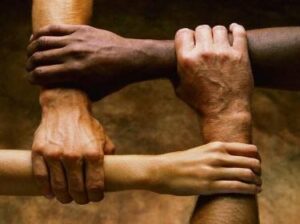What do victims want?

In between the violence and the public uproar, in between the reporting and the moving on to the next Thing, in between the crime and the punishment, there is the world of the victims and survivors–the physical, emotional, and psychological space inhabited by those forever changed by the crimes against them, their families, or their communities.
Buffalo, Uvalde, Tulsa. So many victims. And not “just” the ten in the Tops Market but their families and friends, the neighborhood, the community; and not “just” the twenty-two in Uvalde but the 500-plus other students at Robb Elementary, and the families, and the teachers, and the entire close-knit community. The collateral damage. Mass shootings are so common in our country—270 in the first five months of 2022—that most go unnoticed. And the ones that have broken through because they are particularly horrific, like Las Vegas (58 dead), Orlando (49 dead), Sandy Hook (27 dead) Parkland, FL (17) actually result in a small fraction of the many thousands of victims of homicide every year. (The U.S. murder rate is 4.96 per 100,000, which is more than four times the rate in the U.K. and five times the rate in Germany.)
If we hadn’t grown so numb to numbers, these would startle us: One in four people in the U.S. have been the victim of a crime in the past ten years, and roughly half of those were victims of violent crimes. That’s 75 million victims. From 2018-2020, there were 1.36 million reported forcible rapes. The Department of Justice estimates that 80 percent of all rapes go unreported.
And then there are the victims who are neither acknowledged nor given a platform to be heard. They are the hidden victims, the 2.7 million US children who have a parent behind bars. More than 5 million children—7 percent of all US children—have had a parent in prison or jail at some point. (More than 58 percent of women in state and federal prison and nearly 80 percent of women in local jails have children who are minors.)
These children, who have committed no crime, “forfeit…much of what matters to them: their homes, their safety, their public status and private self-image, their primary source of comfort and affection, as Nell Bernstein writes in All Alone in the World.
What I mean to say is that we are a nation populated by victims. .
What do victims and survivors of crimes really want? We are told, we assume, our entire criminal justice system is based on the idea that they want to see the perpetrators behind bars. Maybe forever. That may, indeed, be what some of them want. But is that all they need? Does locking up the person who profoundly altered the course of their life help them process the trauma? Heal? Move forward? Have they ever been asked this question?






0 comments
Kick things off by filling out the form below.
Leave a Comment